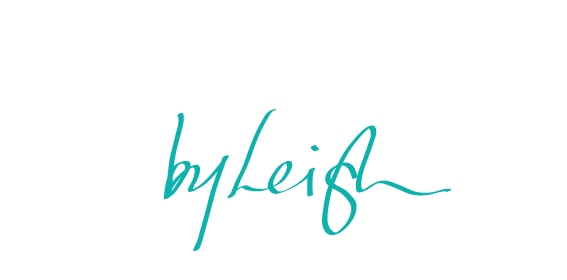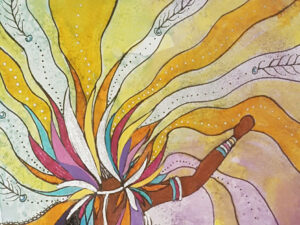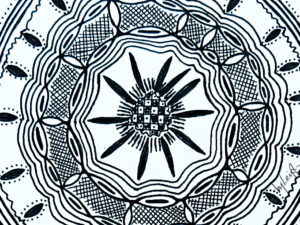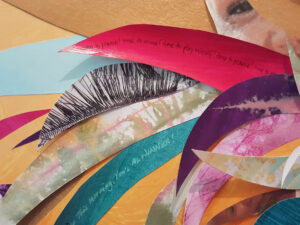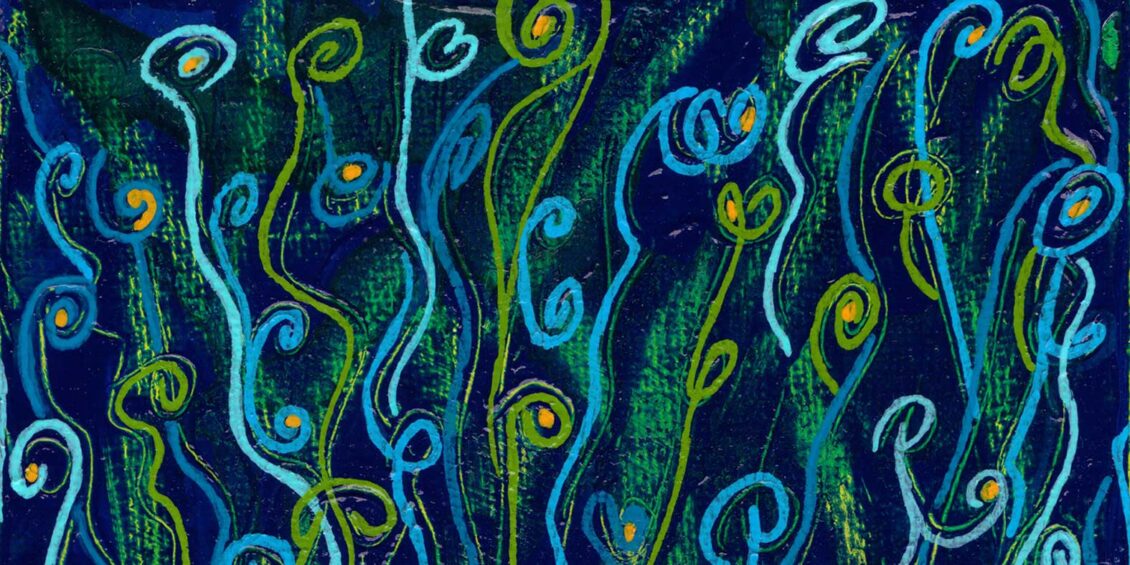
Featured image: “Spring to Life” by SLRoss (2015)
5 Jan 2022
Since I started studying Compassion, the Universe seems to be having a laugh.
“Oh, so you want to be an expert in compassion. Well how yuh handling this, and This, and THIS?”
It’s been one opportunity after another to be compassionate to others and myself, and I don’t mind admitting that I did not pass them all. Some I aced with flying colours but of course, it’s the ones that I stumbled and fell over that stick in my mind. (I guess I haven’t quite nailed self-compassion).
It’s only recently occurred to me that all of these experiences are part of my research! Primary research, in fact.
Story Selection
Before I get into some of the details, I should probably cover why I am willing to tell certain stories and not others. In her Daring Greatly, Brené Brown talks about which stories we should share publicly and why.
“I only share stories or experiences that I’ve worked through and I feel that I can share from solid ground. I don’t share what I define as “intimate” stories, nor do I share stories that are fresh wounds… Second, I follow the rule that I learned in my graduate social work training, sharing yourself to teach or to move a process forward can be healthy and effective, but disclosing information as a way to work through your personal stuff is inappropriate and unethical. Last, I only share when I have no un-met needs that I’m trying to fill. I firmly believe that being vulnerable with a larger audience is only a good idea if the healing is tied to the sharing, not the expectations I might have for the response I get… Being mindful about what, why and how we share is important when the context is the larger public.”
(Brown, 2013)
As a teacher, I use storytelling to make a topic engaging and to build rapport with my students. Where relevant I share stories or encourage students to share their stories about some aspect of the development of their art practice. I find that by showing trust in them with some (carefully selected) aspects of myself, they are more willing to trust me, fell more comfortable in the learning space, learn more about each other, and find commonalities – all of which builds and strengthens our learning community. BUT and this is a big but, I never ever share anything about myself that is raw and still has the power to hurt me. If ever I needed proof that Brown is right about this, Will Smith, Jada Pinkett-Smith and the painful responses to their public discussion about extra-marital entanglements are enough proof, thank you very much (Ross, 2022). As a researcher who is using my own lived experiences as part of my data there needs to be some clear boundaries, process and reasoning when I decide what to include and what to omit.
At this point, my deciding criteria considers the needs of the research filtered through the three key points in Brown’s advice. That said, I am open to revising this approach as I learn more about research, compassion and myself.
One of the incidents I’m willing to share concerns a new friend, let’s call them X, who I’d steadily been building a deep and fantastic friendship with over a period of a year. The friendship was cemented by shared experiences of exploitation within academia. [Here I am choosing to omit several areas of mutuality as these could help to identify X.]
As was the norm for many people over the last two years, our conversations stumbled into discussions about coronavirus, lockdown, vaccines, etc. X had already mentioned due to the sheer number of allergies they had (eggs, dairy, latex, certain fabrics, various medications, etc) that they would not be getting the vaccine. I am both wheat and lactose intolerant and I have a hard enough time finding safe places to eat so I immediately understood their decision and we left it at that.
The next time the conversation came up, X was not feeling well, and I suggested getting a lateral flow test to see if they had the dreaded ‘rona’. Our conversation then went in a direction that I simply didn’t expect. As it turns out, X is what popular culture would call an “anti-vaxxer”. Forget the Covid vaccine, X sounded like they did not subscribe to ANY vaccine. X believed in various conspiracy theories and felt that everyone lining up to get the covid vaccine was acting like the proverbial sheep, blindly following the government.
I stood in my kitchen with my mouth gaping like a fish before I rallied and went into question mode. I cannot tell you whether I asked questions because I genuinely wanted to understand X’s position or whether I asked questions so I could use the answers to rip holes in what I perceived to be faulty logic. It was probably a bit of both. I was genuinely horrified at the time, and I imagine X was equally horrified by me too.
I spent 1 week in an existential crisis. How could I continue my collaborative work with X? It was all ok now that we were online but what happens when we are back in shared space? How could I not know this about someone I’d grown so very close to? How could X believe in such wild conspiracies with no evidence to support them? Did this mean we had to stop being friends? I spoke to my husband and mother about my shock, disappointment and confusion. I journaled about it. It popped into my mind repeatedly every day. Yet, despite my supposed horror, 3 days in I messaged X to ask how they were feeling and wished them a speedy recovery. I still cared, and that made me stop and think.
I zoomed in on myself. I claim to be compassionate. I claim to be inclusive. I have dedicated my professional and private life to these values and though I do not expect to get things right every time, I expect myself to make a concerted and deliberate effort to embody what I believe. So what part of my reaction to X was compassionate or inclusive? Am I only compassionate and inclusive when people agree with me and my beliefs? Where do I draw the line? Should there be a line? The questions circled my mind like water swirling down a drain.
Six days after X and I discovered such shocking things about each other, I finally found my peace while journaling.
That peace started by asking myself a few pointed questions.
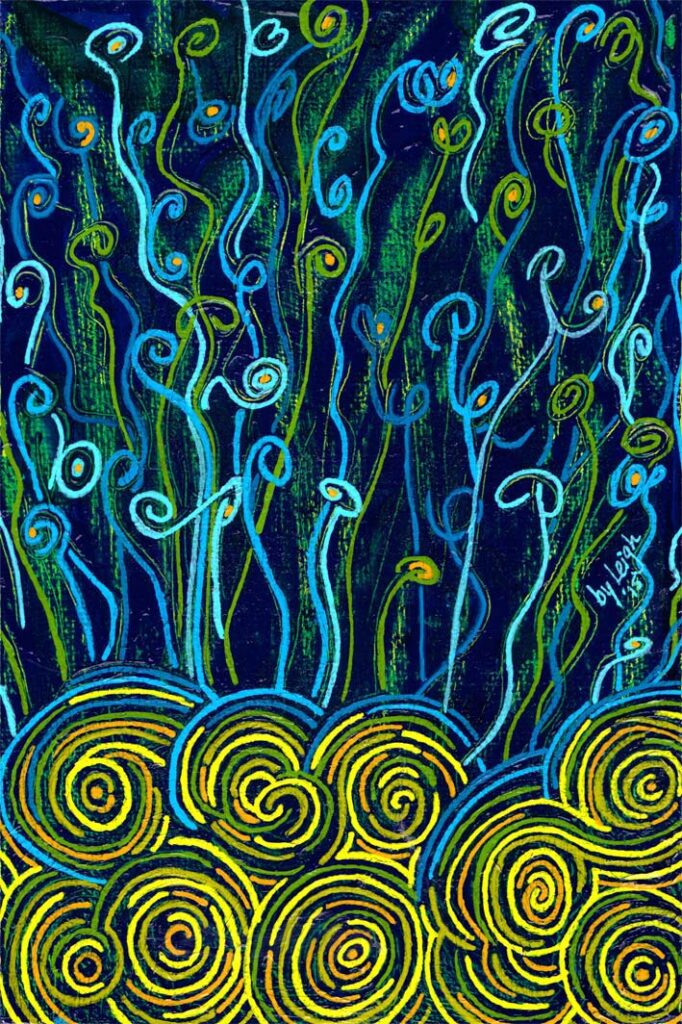
Think of all the reasons you became friends with X. Have any of those changed?
No.
What would it cost you to continue loving X?
Nothing. Even in person, X could not endanger anyone in my family. My kids are going to school without masks with hundreds of children. I’m sure school exposes them to Covid more than X ever could. As for other illnesses, we have all our vaccinations. Frankly, the person most at risk if we meet up in person is X, not me or my family, and that is X’s choice to make, not mine.
How would it help you to stop being friends with X?
It wouldn’t help and frankly it would make me feel very unsettled. I have only ever deliberated ended 2 friendships in my whole life: one because it was toxic and draining me, the other because I felt the relationship was built purely around the other person’s convenience. What I needed was routinely dismissed unless it suited their purposes. Coming back to X…“Because you don’t think like me” does not feel like a valid reason to end a friendship.
Could this impact your collaboration negatively?
Possibly, but if we consider the possible fall-out and strategise accordingly, we can almost completely mitigate any potential problems. It would require open honest conversations focused on how we work to address any potential participant concerns, not a discussion of our vaccine beliefs, and who is right or wrong.
And so 1 week after my concept of X and myself got blown to smithereens, I sent another checking-in text to see how they were doing. Seems they were just emerging from the fog of illness. By the next day, we were messaging back and forth, and when we finally spoke to each other a few days later, I stood awkwardly but honestly in my values. I admitted that I responded badly to our difference in beliefs and I apologised. I thanked X because, without intent, they taught me a valuable lesson about living my values and helped me to really evaluate what it means for me to be authentic in situations like this. I explained how I realised that this issue was not about our divergent beliefs but my understanding of what it means to be inclusive and compassionate. It’s been almost 6 months since that conversation and our friendship is as strong as ever. Collaborations are going strong! I will never share X’s beliefs about vaccines unless new evidence comes to light but that is pretty irrelevant to our friendship. X taught me that!
Now let’s analyse this through the compassion lens.
According to my (evolving) definition of compassion (definition blog post in progress) it happens in four stages or factors, as Strauss et al. (2016) call them. My factors are:
- See someone’s distress
- Empathise with their distress
- Desire to ease the distress
- Feel motivated/act to ease the distress
In my conversation with X I failed at the very first hurdle. I could not see X’s distress about the global pressure to be vaccinated, and as a result I could not move through the other stages/factors of compassion either. This behaviour seems to support Gu et al.’s (2017, p.10) proposition that compassion is a construct consisting hierarchical factors. (That said, I do acknowledge that Gu et al analysed Strauss et al’s five factors of compassion while I am working with only four factors… for now.
Ok, so I failed to see X’s distress. No self-recriminations. Those aren’t helpful Stacey, though… they do adjust your lens on this incident. Where was your self-compassion? Did you notice your own distress? Did you empathise with yourself? Were you as gentle with yourself as you might be with someone you love? I failed this one too, at first… It took a day or two but I did eventually identify my feelings as some form of distress. After three days or so I even managed to name my contorted emotions and empathise with that state of confusion, discomfort and pain. Then a day later, I felt the need to make this situation better. Hello Stage 3 – my desire to ease the distress had arrived. Desire turned into motivation, and that evening, I sat down with my journal to purge, record and analyse what I was actually experiencing in this moment. Journaling helped me to see where I missed the opportunity to be compassionate towards X too, which instantly set me to empathising with how they might have felt during and after that conversation. Eventually, all this ‘processing’ led to action, and according to my findings so far, the action born of compassion is often kindness. In this case, it was time to be kind to myself and to X. By the time I apologised to X and owned my part in our mutual distress, I had worked through all the stages of compassion for myself, then X, and finally I enacted kindness, hopefully, for us both. The result? A stronger, more joyful experience of friendship that continues to grow.
Reference list
Brown, B. (2018) Daring Greatly: How the Courage to Be Vulnerable Transforms the Way We live, love, parent and lead. Audiobook. London: Portfolio Penguin. Available at: https://www.audible.co.uk/pd/Daring-Greatly-Audiobook/B07CZ272N1?action_code=ASSGB149080119000H&share_location=pdp&shareTest=TestShare (Accessed: 2019).
Gu, J. et al. (2017) ‘An Empirical Examination of the Factor Structure of Compassion’, PLoS ONE, 12(2), p. 10. doi:10.1371/journal.pone.0172471.
Ross, M. (2022) ‘Jada, Jaden and Willow Feeling the Pain of Will Smith’s Slap’, The Mercury News, 7 April. Available at: https://www.mercurynews.com/2022/04/07/jada-jaden-and-willow-feeling-the-pain-of-will-smiths-slap/ (Accessed: 12 May 2022).
Strauss, C. et al. (2016) ‘What is compassion and how can we measure it? A review of definitions and measures’, Clinical Psychology Review, 47, pp. 15–27. doi:10.1016/j.cpr.2016.05.004.
